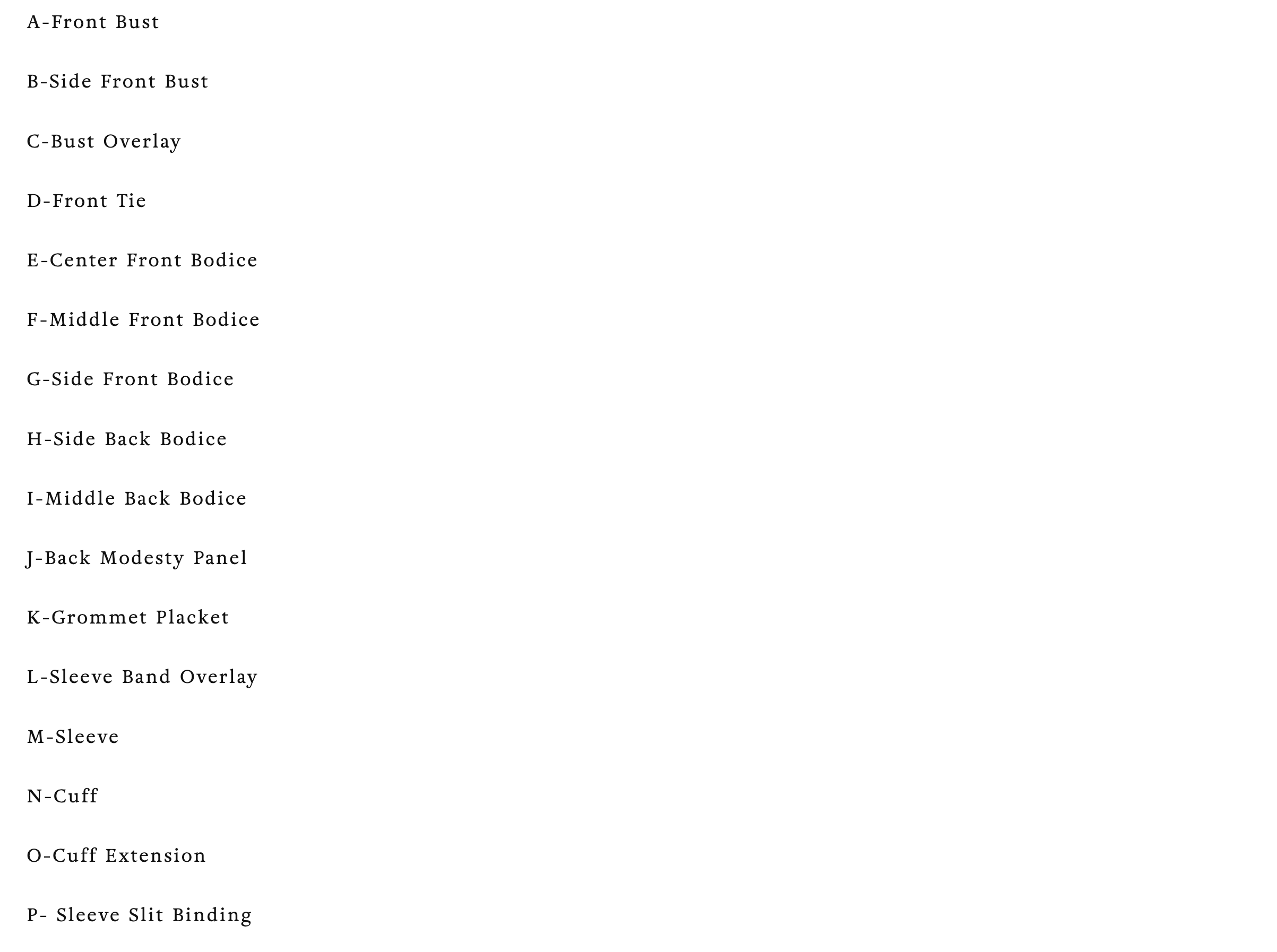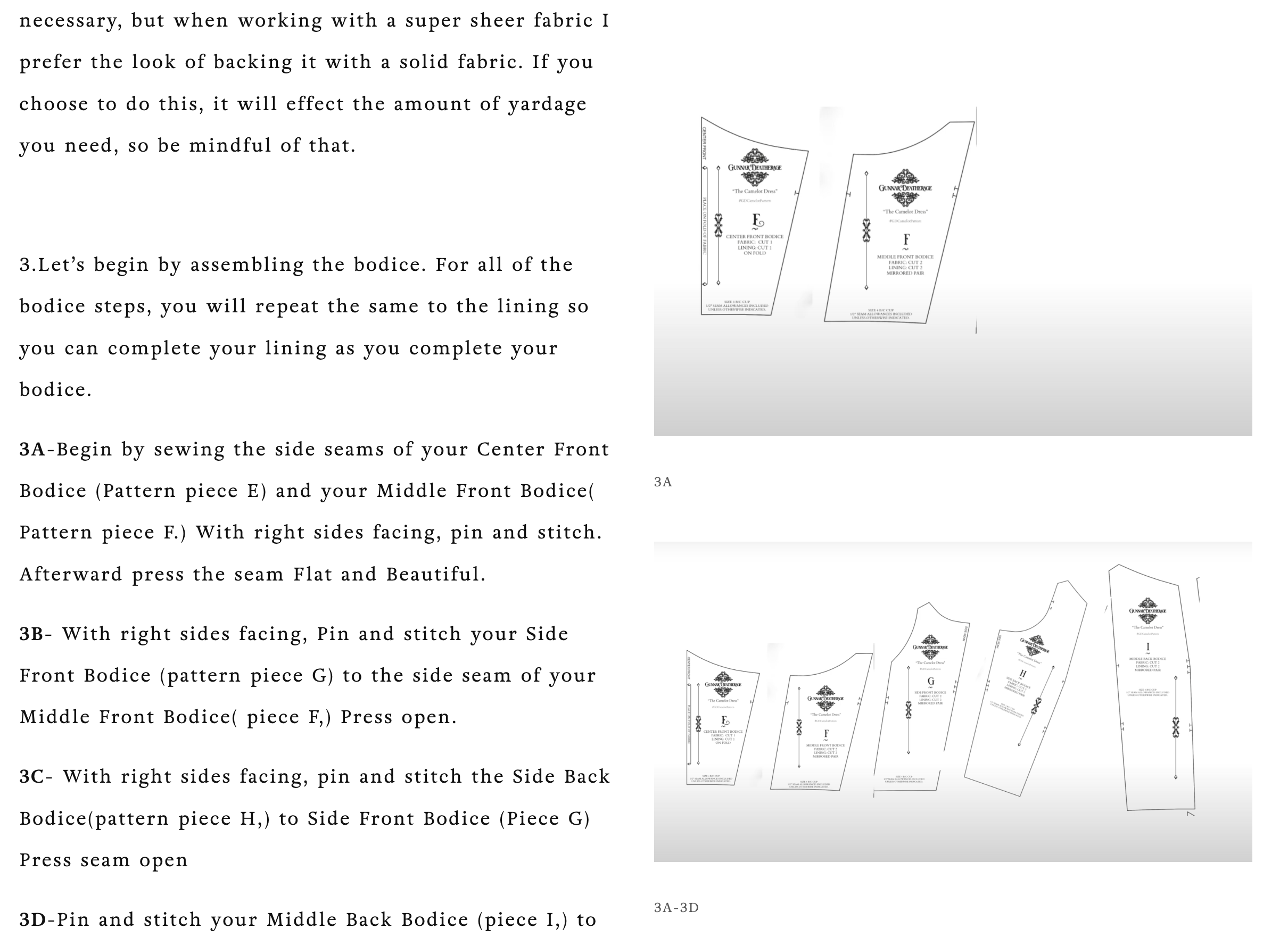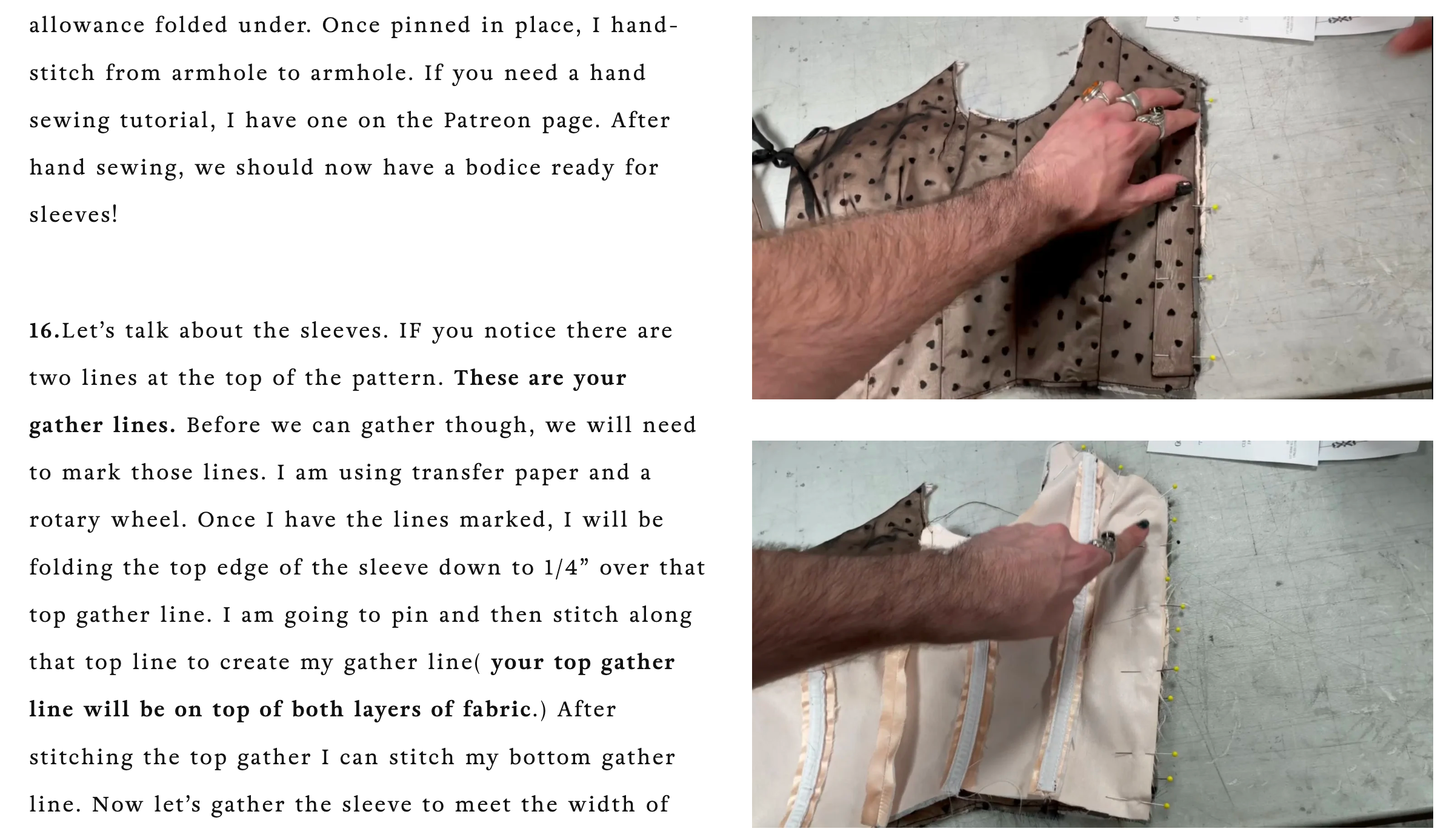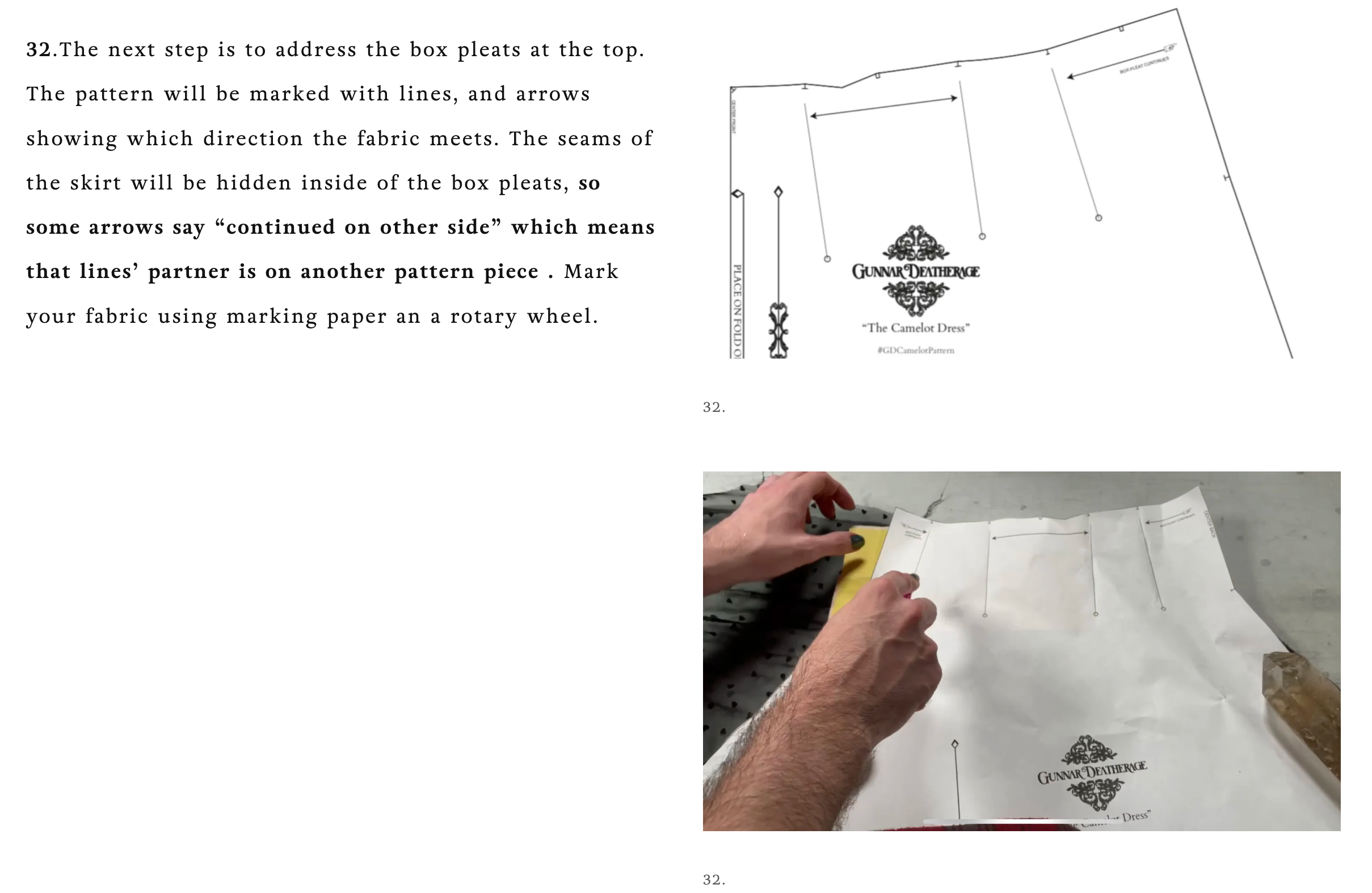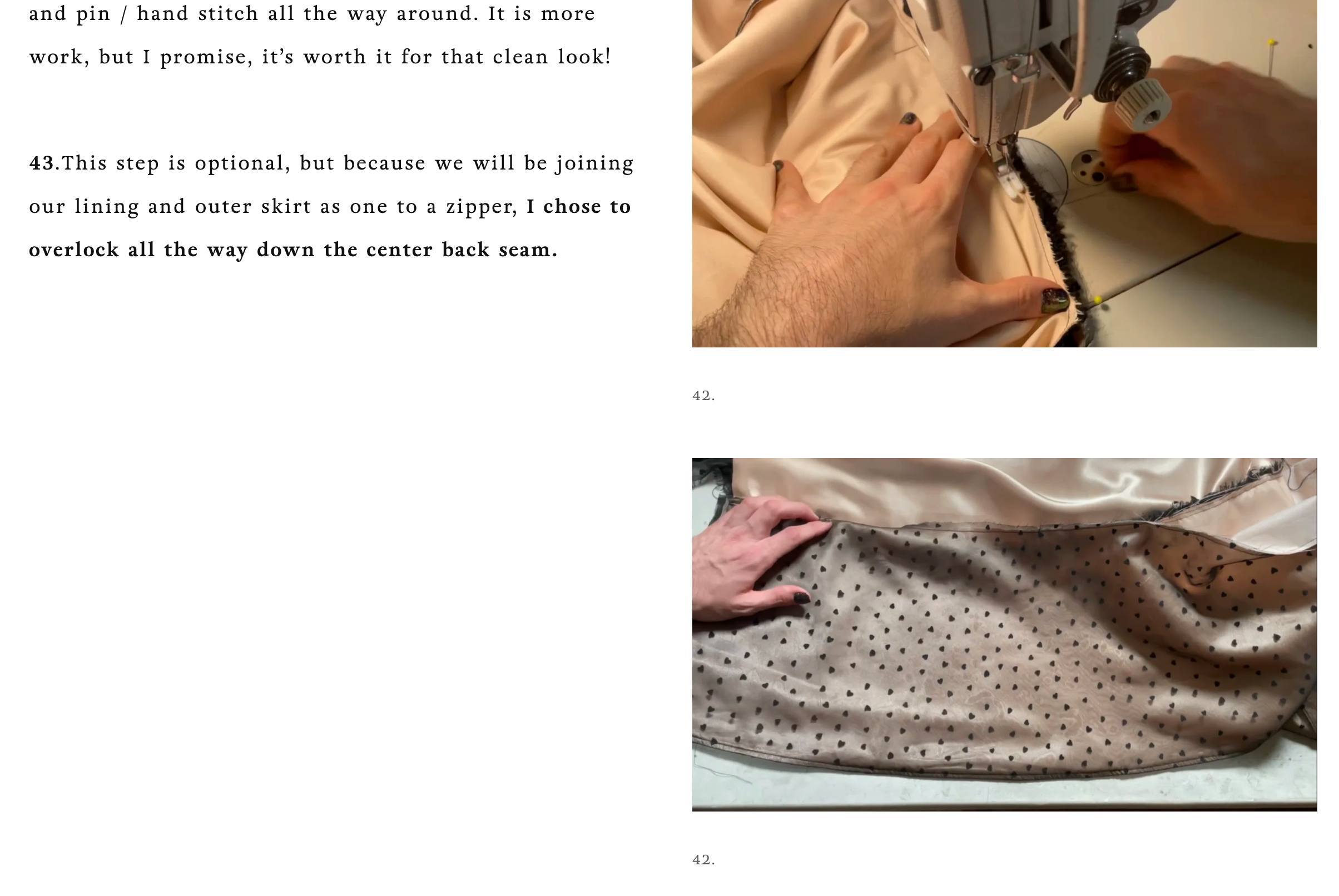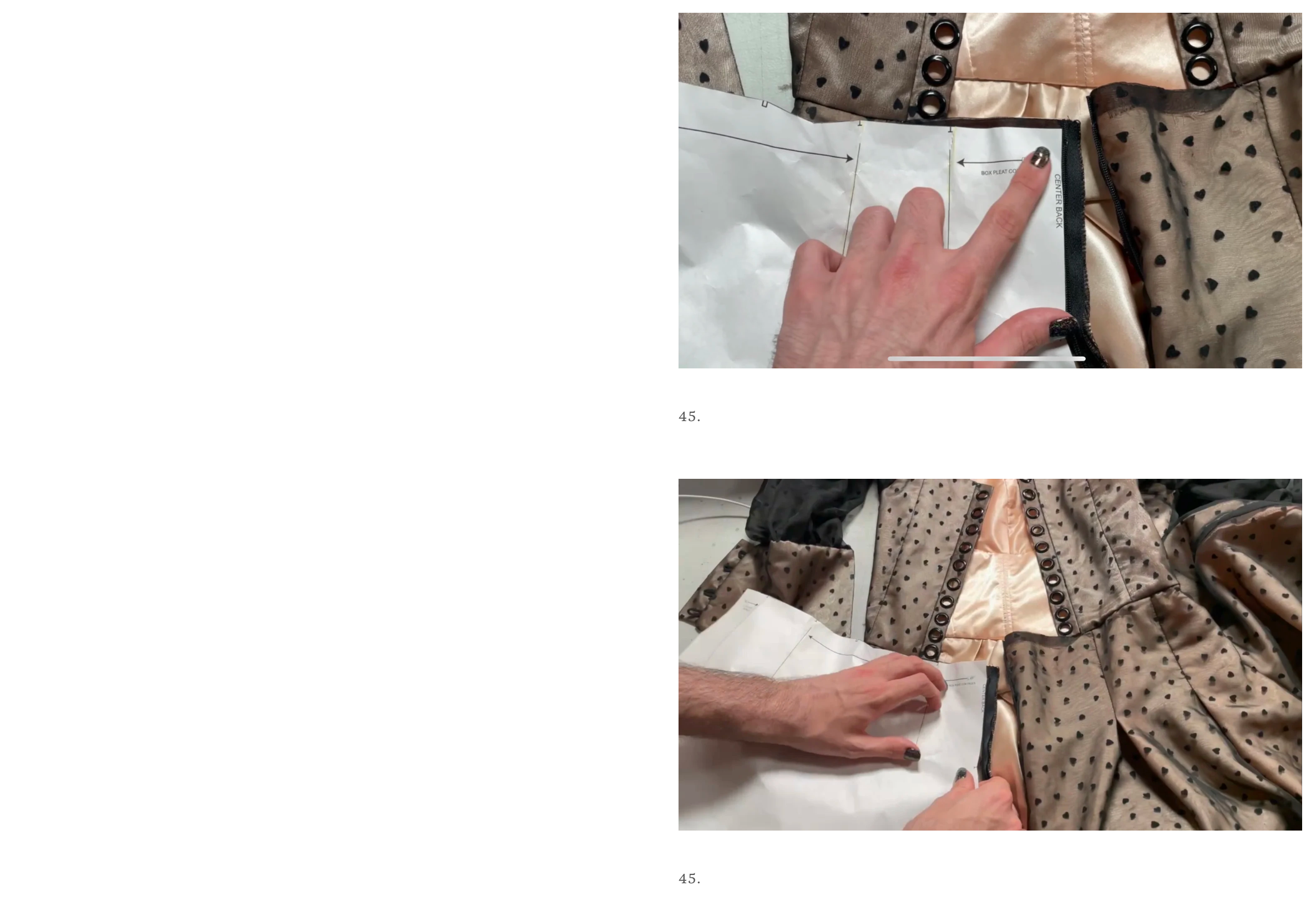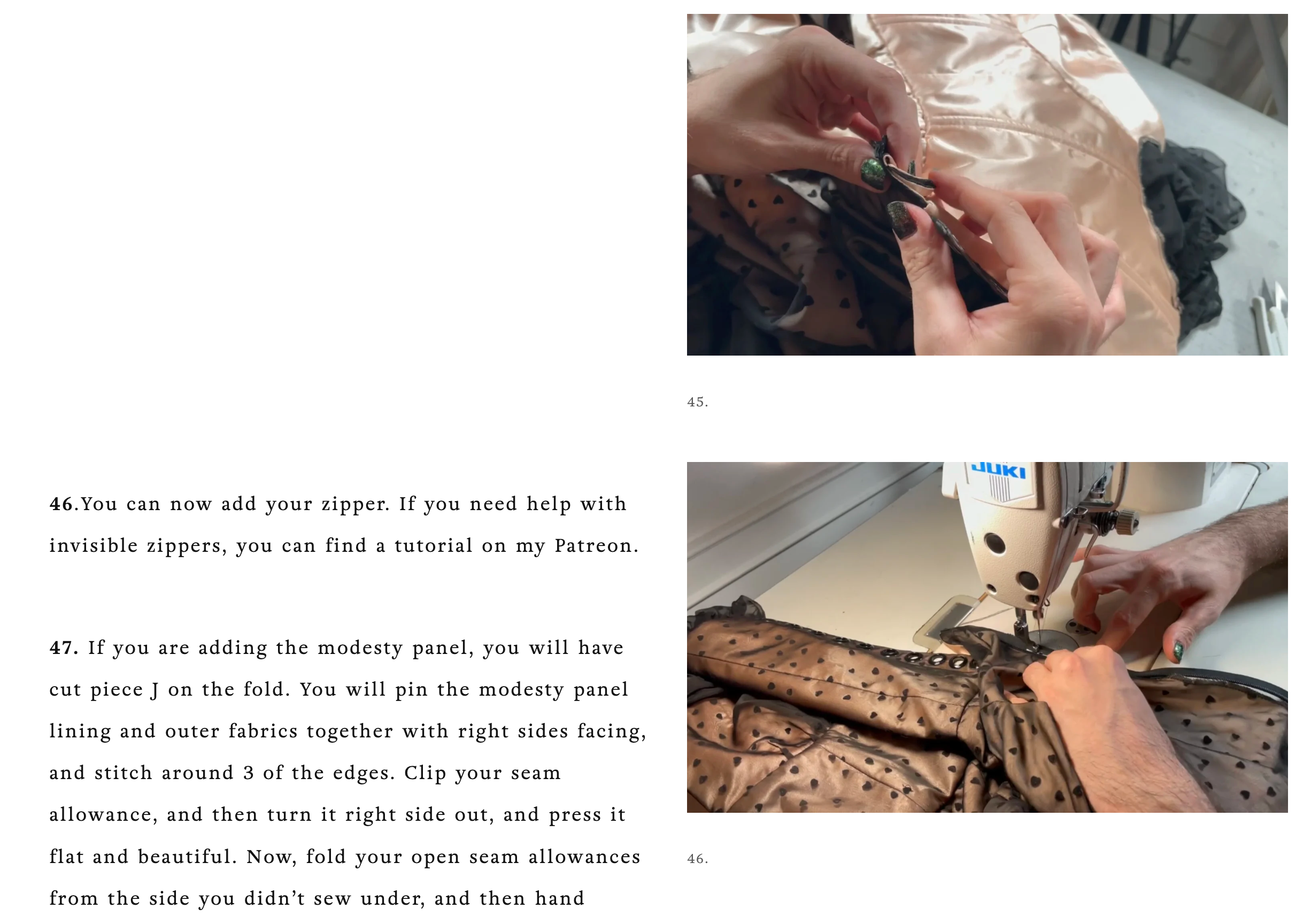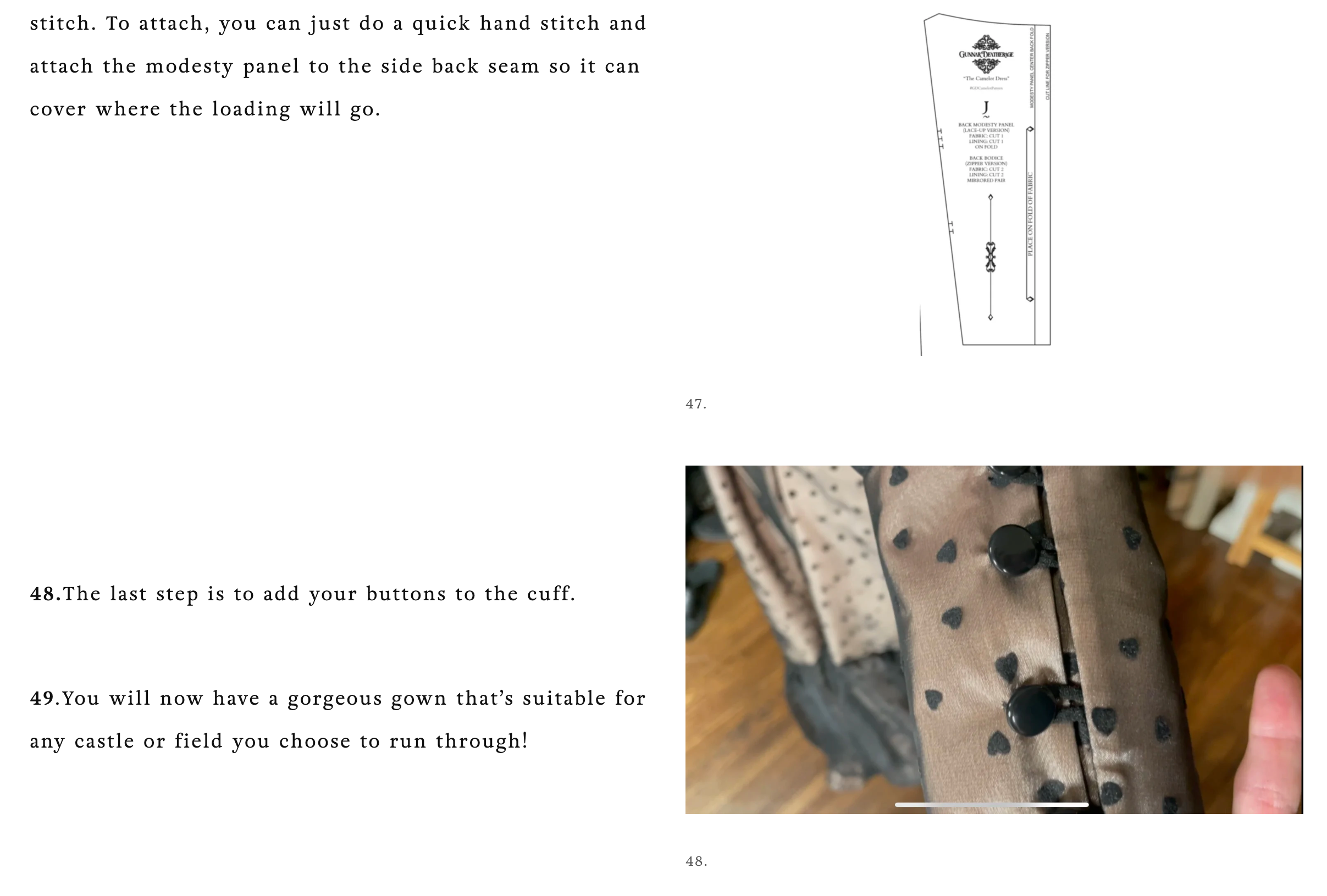The Camelot Dress Sewing Pattern Guide

Welcome to the Camelot dress guide! This dress was inspired by the idea of late nights running through castle hallways, prancing through fields of wildflowers, and the romance of times of the past.
This dress features an off the shoulder design with ruffle detailing, a bodice with corset style lines, the option to lace up, or zip, a beautifully draped sleeve that meets a high cuff for extra drama, and a high low skirt that is designed for beautiful movement.
Below are the written sewing instructions, and I also filmed a step by step Youtube video of the entire creation process of this dress which is on the left of this text box! When you make your dress, please tag me! I would love to see what your dress looks like!!

